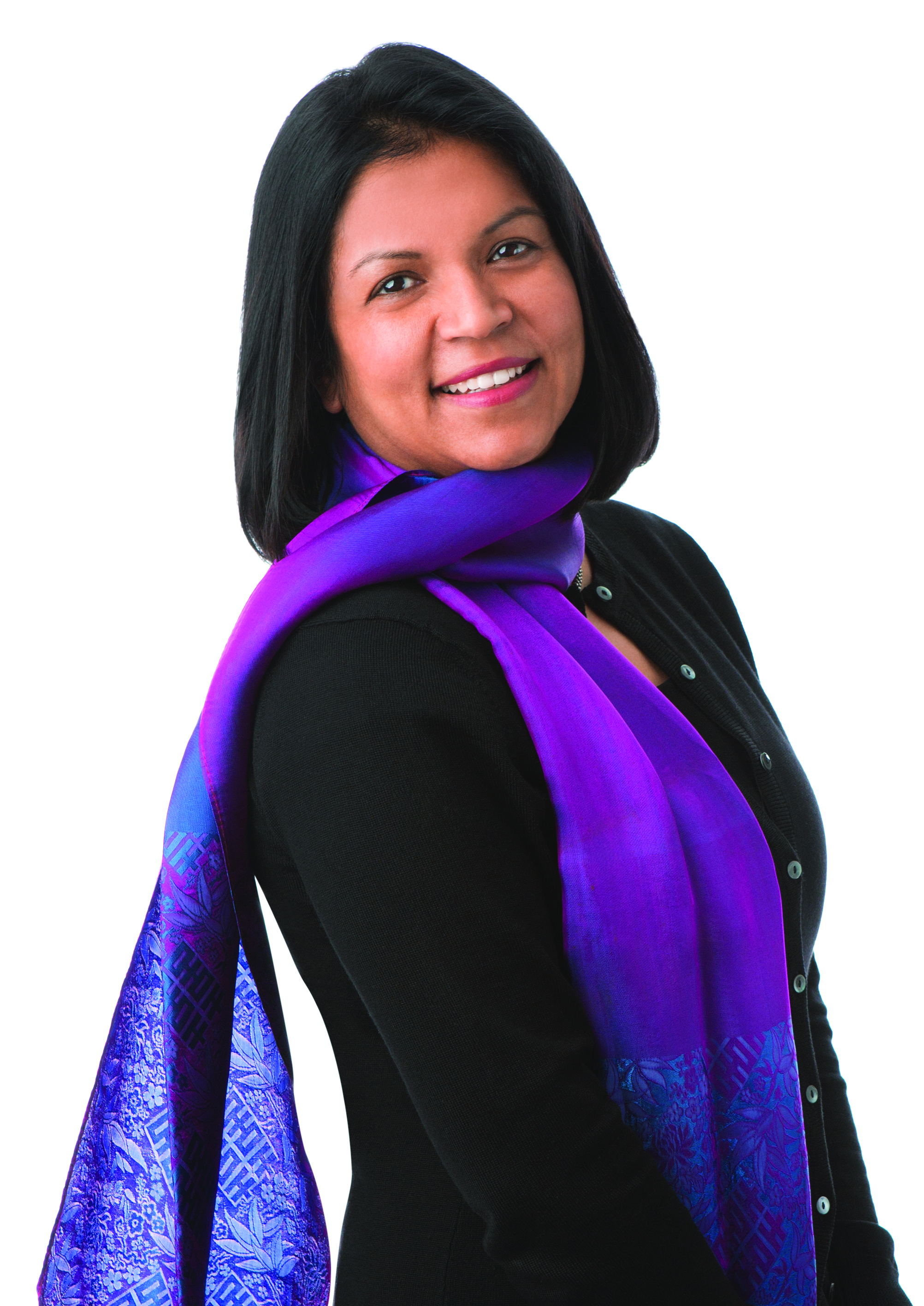Columbia Threadneedle Investments Celebrates 2022 International Women’s Day
This year’s theme for International Women’s Day is: #BreakTheBias. We’ve asked several of Columbia Threadneedle’s female leaders how they break biases, as investment professionals and as business leaders.
Melda Mergen, Global Head of Equities, Columbia Threadneedle Investments.
 |
Do you think there are any implicit biases or stereotypes that female portfolio managers still face?
As investment professionals, we make a lot of decisions every day. Our central focus is to gather information and funnel it into insights which allow us to produce investment outcomes for our clients. That decision-making process can be very different from one person to another.
For instance, studies have shown that there are differences in the way men and women solve problems. Women usually make decisions with more information than men. While this difference in approach doesn’t necessarily result in the perception of women making poor decisions, it can morph into an oft-cited bias that female portfolio managers are risk averse and indecisive. To break this bias, you need to measure outcome instead of process to reward success.
How do you counteract biases in investing?
We actively seek ways to identify and solve biases. We believe in continuous improvement and in repeatable, proven investment processes and philosophies. If we can define, validate and prove that an investment process works, we can remove any emotional reaction when investing in the markets. Collaboration is also key. We work together to create analyses based on facts and data, so when we have differences of opinions, those discussions are based on the data, not on the personalities. People are empowered to make their own decisions, however everyone understands and follows the same process.
As a people leader how do you deal with bias that emerges in the management and development of talent?
At Columbia Threadneedle, we view talent development as everyone’s business. There are many eyes and ears on a person’s career. We don’t rely on just one leader to see someone’s potential. We take a more holistic look at our talent pool. This helps to eliminate any individual biases a manager may have on his/her direct reports.
Looking at my own career arc, I’ve benefitted greatly from this collaborative culture. Over the years, I’ve received feedback from my direct manager as well as others on the senior leadership team which has allowed me to acquire the skills I needed to become a senior leader myself.
What have you done when encountering a bias?
We are all human and we all have biases. Any time I feel the need to speak out to correct a bias, I stop and ask myself. ‘Why am I doing this?’ And if I find that my reason is valid, I don’t worry if others might perceive me as “doing the wrong thing”.
I view someone’s bias as their problem, not mine. I feel sad that they can’t see the potential in someone else or appreciate a different approach. One of the reasons why I love statistics is that you have to think about the distribution of the data. Biases are usually formed based on very small samples – such as the limited experiences that people have. The more we encourage people to expand their horizons and get out of their comfort zone, the more experiences they will have that can lead to potentially eradicating biases.
Anwiti Bahuguna, Head of Multi-Asset Strategies US, Columbia Threadneedle Investments.
 |
How I’m breaking the home bias in investing
As a portfolio manager focused on globally diversified asset allocation portfolios, I frequently encounter client portfolios with a strong “home bias”.
Home bias in investing refers to the practice of investing a disproportionately large amount of your portfolio in domestic investments at the expense of diversification. The tendency to do so is quite rational as people are comfortable investing in familiar companies and may not know much about foreign companies. They may worry about lack of transparency, regulations, transaction costs and currency risk of investments abroad.
As an example, the United States represents about half of the market capitalization of global equities, but studies show that U.S. investors hold about 70-80% of their equity investments in domestic stocks. Typically, home bias is stronger for smaller countries like Japan and Sweden whose stock markets are not particularly big and yet their investors’ allocations to domestic stocks are disproportionally high.
Studies and historical data show that well-diversified global portfolios are the best protection against risks present in one single country. The U.S. is emerging from a decade of double-digit returns (16.6% in S&P 500 for the 10-year ending December 2021) relative to about 8% in developed market equities and only 5.5% in Emerging Markets and this has led to acutely “home-biased” portfolios. However, just a decade earlier S&P returns were a mere 3% against 14% for Emerging Markets and 5% for developed markets. Diversification remains the best way to “break the bias” in investing by allocating investments among various asset types, across different regions and sectors.
Jess Williams, Analyst, Responsible Investment, Global Research, Columbia Threadneedle Investments.
 |
How I’m breaking an investment bias
Within my area of thematic responsible investment research, Energy Transition, we are looking closely at the implications of forecasting bias in renewable energy adoption, thanks to the insightful work of Professor Matthew Ives at Oxford University.
Dr Ives’ work explores the results of Oxford’s latest empirically grounded technology forecasting approach to mapping out the clean energy transition showing what might happen if such sources of estimation bias are removed. The results are astounding -- industry and analyst predictions of the cost and build out for decarbonising the global energy system have been regularly beaten by real-life progress.
It’s become apparent that forecasts of renewable energy cost declines have been systematically biased to the downside which can have political and investment implications.
For example, the IEA thought the cost of solar would remain higher than fossil electricity in 2040 when the Paris Agreement was penned in 2015. They also anticipated a total installed capacity of 360 GW of solar by 2020. Already, both these predictions have been blown out of the water.
In 2020, 90% of new electricity generation was cheaper from renewables than from fossil fuels, and 710 GW of solar had been deployed, almost double the 2015 estimate (BNEF, Carbon Tracker, IEA).
Removing these forecasting biases is essential to appreciating just how disruptive renewable technologies can be.
How I’m breaking a gender bias
Biases in hiring practices are familiar phenomenon and something that Columbia Threadneedle has worked hard on within the company’s operations. When it comes to the companies in which we invest, we expect the same standards.
In 2016, we established a board gender voting position and since then have been ratcheting up our expectations every year since. Within the past year alone, we cast dissenting votes against 447 directors (usually the chair of the nominations committee) for inadequate board diversity. We believe strongly that a diverse mix of talent leads to better performing boards with more optimal decision-making capabilities.
Pauline Grange, Portfolio Manager, Global Equities, Columbia Threadneedle Investments.
 |
How I’m breaking investment bias
Having been a portfolio manager for 20 years and lived through two major market crises - the Tech bubble collapse and the global financial crisis - I’ve seen the industry embrace the need for greater diversity, as we only stand to gain from a diverse workforce.
Asset management firms have recognised diversity is vital to support better decision-making and risk management, as well as to help to avoid some of the risk taking that led to the global financial crisis. Additionally, diversity enables access to a wider pool of talent, generating greater customer insight by having employees that better represent a diverse customer base.
How I’m breaking a gender pipeline bias
It can be argued that despite diversity improving in the asset management industry, there is much more to be done with regard to gender diversity amongst portfolio managers. I believe part of this is due to the biased perception that portfolio management is too “aggressive” an industry that is still too male-dominated. In turn, this dissuades younger generations of women from pursuing a career in the industry. While it’s easy to set diversity targets, making the cultural and work changes necessary to attract a more diverse future generation of portfolio managers is the bigger challenge.
Luckily at Columbia Threadneedle I work with a great team of people and have enjoyed a culture that embraces diversity. One of my key challenges in “breaking the bias” was when I had my first child. As a working parent 11 years ago, many attached a stigma to portfolio managers (regardless of their gender!) wanting better “work/life” balance. I advocated for a four-day work week believing that there was no reason that a competent working parent couldn’t deliver investment success for clients whilst also spending quality time with their children. I was one of the first portfolio managers at Columbia Threadneedle to be granted this and 11 years later I’ve proven that positive work/life balance not only helps to promote greater diversity amongst staff (many studies show that women are much more likely to give up work after having a baby regardless of earnings) but also a more loyal and satisfied workforce.
In today’s post-COVID world, flexible working arrangements are finally being accepted more broadly creating both greater diversity and business success.
Tammie Tang, Senior Portfolio Manager, Fixed Income, Columbia Threadneedle Investments
 |
How I’m breaking investment bias
Our life experiences can shape our implicit biases. They shape our beliefs and attitudes but they may not always be based on empiric facts.
The first step to break a bias is to be aware of its existence. Awareness helps us to avoid decisions led by unconscious bias and allows us to make decisions using informed analysis or reasoning. Some of the biases that I think are more relevant to investment management include:
- Heuristic bias – where we may form generalised views based on recent or repeated exposure to news or the media (often of the negative sort), rather than views based on fact.
- Overconfidence bias – where we can think we know more than we do or we underestimate what we don’t know.
- Confirmation bias – where we only absorb information that supports existing beliefs or ignore information which contradicts existing beliefs.
Ways to overcome our internal biases within investment management include: (1) a focus on research, to seek out the truth, supported by facts and statistics, (2) a process to facilitate information flow to continually challenge our knowledge, and (3) a process which allows collaboration and promotes different views, so that our decisions are not exclusively based on a single view or not exclusively by consensus.
How I’ve broken biases throughout my career journey
Studies say that our brain has a negative natural bias. The main reason is our pre-historic instinct of survival, which causes to amplify and remember our negative experiences more than positive ones. This might be the reason why the pain of loss (a possession or an investment), is greater than the joy we would experience with a similar new possession or financial gain.
In my career, I’ve learned that negative views and attitudes, particularly for issues beyond a pure investment thesis, can have a detrimental effect in decision making and our well-being. By being aware of my own negative views and attitudes, I can replace them with more constructive views. While this requires consistent effort, the benefits are more positive and productive, ultimately gives me more career satisfaction.



